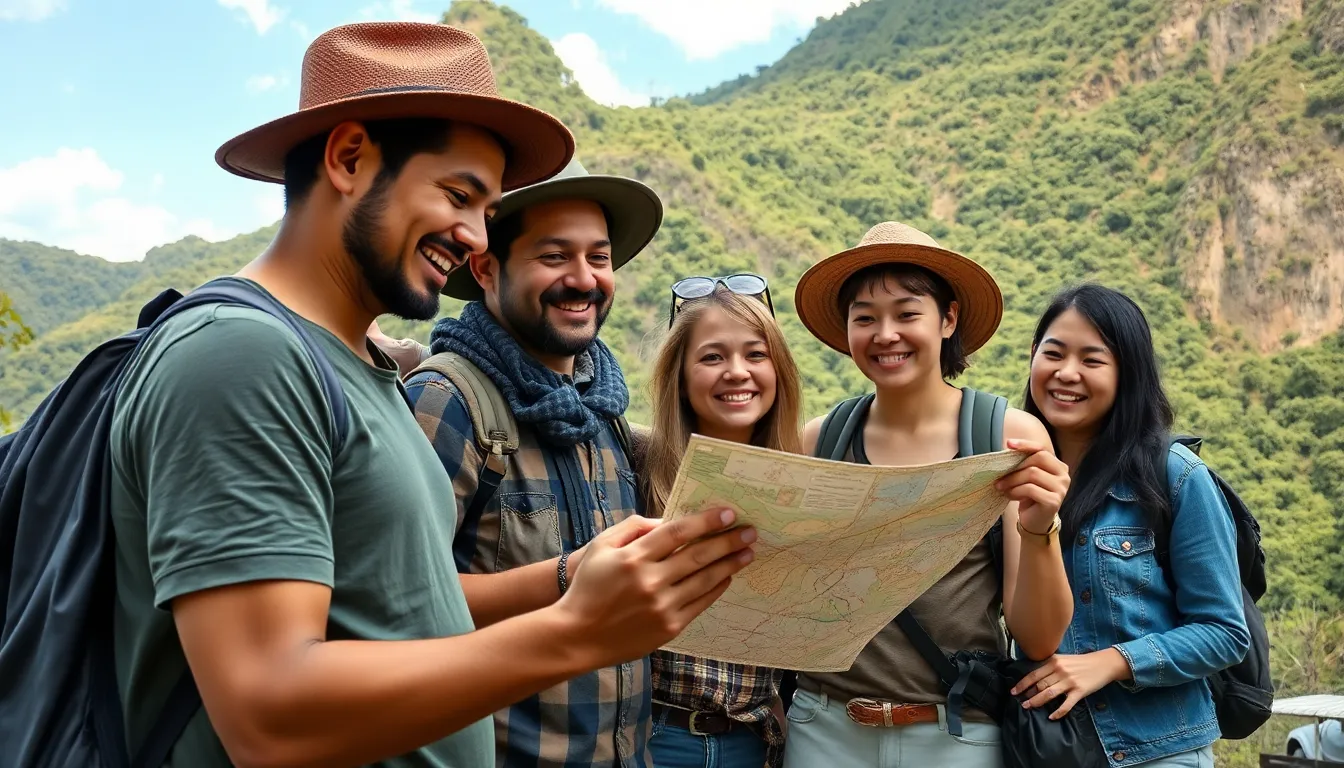In a world where adventure beckons but safety concerns loom large, minimum risk travel emerges as the superhero of modern exploration. It’s like going on a thrilling quest without the pesky sidekicks of worry and anxiety tagging along. Who wouldn’t want to sip a piña colada on a pristine beach while knowing that their travel plans are as secure as a vault?
Table of Contents
ToggleUnderstanding Minimum Risk Travel
Minimum risk travel focuses on enjoyable adventures while minimizing safety concerns. This travel style allows individuals to explore new destinations confidently.
Definition of Minimum Risk Travel
Minimum risk travel refers to exploring new locations with a strong emphasis on safety and security. It prioritizes destinations with lower crime rates, reliable healthcare, and a good infrastructure. Travelers often find themselves choosing well-reviewed accommodations, trustworthy transportation options, and reputable tour operators. This approach aims to provide a fulfilling experience, allowing thrill-seekers to engage in activities like hiking or cultural immersion without unnecessary worry.
Importance of Safety in Travel
Safety in travel remains crucial for overall enjoyment and peace of mind. When travelers feel secure, they can immerse themselves in experiences, creating lasting memories. Research shows that feeling safe reduces stress levels, allowing for better enjoyment of destinations. Engaging with locals becomes more approachable when travelers maintain a sense of security. Additionally, selecting safe destinations helps prevent health and legal issues, ensuring smooth journeys. By prioritizing safety, travelers can explore without fear of unexpected disruptions.
Key Principles of Minimum Risk Travel

Minimum risk travel centers around safety and enjoyment, enabling travelers to experience new adventures without anxiety. Prioritizing security allows individuals to fully immerse themselves in their surroundings.
Researching Destinations
Investigating potential destinations proves critical for ensuring safety. Review crime rates and healthcare availability before finalizing plans. Inspecting travel forums and trusted websites offers insights from other travelers’ experiences. Choosing locations praised for low crime can significantly reduce concerns. Evaluating local infrastructure helps assess accessibility and convenience. Transparency in accommodation reviews also enhances decision-making processes. Identifying regions with a good government presence commonly leads to better security measures. Engaging with local guides familiar with the area can further provide valuable insights.
Preparing for Different Scenarios
Planning for various scenarios equips travelers for unexpected events. Crafting a flexible itinerary allows adjustments based on real-time information. Including emergency contact numbers in travel documents ensures readiness for potential issues. Establishing connections with local authorities provides added reassurance. Packing necessary medications and supplies mitigates health-related risks. Creating a budget for emergency expenses strengthens financial preparedness. Notifying banks about travel plans helps avoid financial setbacks. Utilizing secure payment methods adds an additional layer of safety against theft.
Strategies for Minimum Risk Travel
Engaging in minimum risk travel involves careful planning and smart decisions at each step. Prioritizing safety ensures a more enjoyable experience.
Choosing Safe Accommodations
Selecting accommodations based on safety ratings matters significantly. Travelers often use reputable booking platforms to compare guest reviews and safety records. Secure locations near hospitals and police stations add an additional layer of comfort. Consulting local travel advisories helps in making informed choices. It’s essential to check for safety features like 24-hour security and room locks. Opting for well-lit areas also increases safety when returning at night.
Staying Healthy on the Road
Maintaining health while traveling requires proactive measures. Packing essential supplies such as medications and a basic first-aid kit proves beneficial. Vaccination recommendations should be reviewed before heading to specific destinations. Drinking bottled water in areas with questionable tap water helps prevent illness. Local cuisine can offer delightful experiences; however, understanding food safety practices is crucial. Staying active and hydrated enhances overall well-being during the trip.
Navigating Local Policies and Regulations
Understanding local policies and regulations enhances safety during travel. Familiarizing oneself with customs procedures can ease the arrival process. Knowing local laws, such as those related to alcohol consumption, promotes responsible behavior. Keeping documentation handy simplifies interactions with authorities. Travelers often benefit from understanding transportation rules to avoid fines. Engaging with local guides can provide insights into cultural norms, promoting respectful interactions.
Case Studies of Successful Minimum Risk Travel
Exploring real-life examples highlights the effectiveness of minimum risk travel strategies. Travelers showcase how prioritizing safety allows for enjoyable experiences without unnecessary worry.
Traveler Testimonies
Many travelers share positive experiences when focusing on safety. One traveler reported visiting Costa Rica, emphasizing the comfort of choosing accommodations with high safety ratings. She connected with local guides, ensuring secure adventures filled with exploration. Another individual mentioned a trip to Japan, where basic research on safe public transport led to seamless navigation. They felt reassured knowing the infrastructure prioritized traveler safety. Such testimonies underline the benefits of well-planned journeys that center on security while enjoying new cultures.
Analyzing Different Regions
Regions with proven safety records often lead to less stressful travel experiences. Southeast Asia ranks highly, attracting visitors with its reliable healthcare and welcoming environment. Travelers often choose Thailand for its balance of stunning scenery and low crime rates, promoting relaxation without constant vigilance. European countries like Finland also emerge as safe havens, offering travelers well-maintained public spaces and efficient transportation. By analyzing these areas, travelers can identify destinations that align with their desire for adventure while minimizing risks.
Conclusion
Minimum risk travel opens the door to exploration while prioritizing safety and peace of mind. By carefully selecting destinations and accommodations travelers can enjoy adventures without the burden of worry. The strategies outlined empower individuals to make informed choices that enhance their experiences.
With a focus on preparation and local insights travelers can navigate new environments confidently. Embracing minimum risk travel not only fosters memorable journeys but also allows for deeper connections with diverse cultures. As safety becomes a cornerstone of travel planning the joy of discovering the world can flourish.



